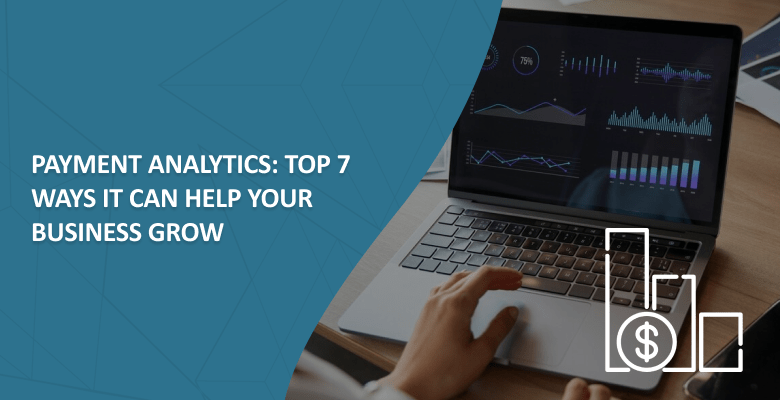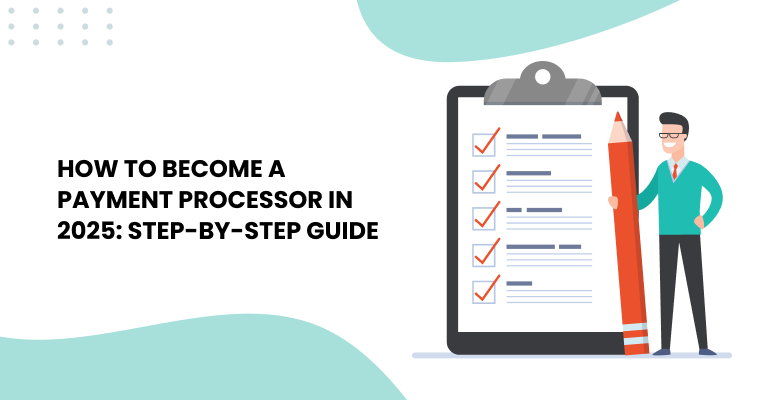
With an increasing number of payment channels, data consolidation and analysis are now of utmost importance for merchants and payment service providers. That’s why today we’ll uncover payment analytics – a process of collecting and analyzing transactional data from multiple channels.
While analytics and its importance frequently arise in business, they primarily focus on marketing efforts and barely ever touch the payments. And that hurts business more than you can tell.
According to Statista, in 2023 alone, global retail e-commerce sales have reached an estimated 5.8 trillion U.S. dollars. This translates into massive chunks of valuable data and insights into customer habits and trends that go unnoticed. Thus, in this article, we’ll guide you through the benefits of implementing payment analytics and how it can help your business grow.
What is payment analytics?
By definition, payment analytics involves collecting and analyzing transactional data across multiple payment channels. Yet, as manual data collection is quite intricate and demands significant employee resources, it led to the development of automated analytics technology.
In the digital payments industry, payment analytics refers to cutting-edge technology that automatically captures multi-channel transaction flow inside a single system to easily keep track of various transaction parameters.
Businesses have several avenues for harnessing this technology: they can develop it in-house, utilize third-party payment analytics software, or adopt an advanced payment solution equipped with integrated analytics capabilities. While independent development entails complexity, high costs, and time-consuming implementation, and an external payment analytics platform may be expensive and complicated due to data aggregation challenges, the most convenient approach for businesses is to select payment software already equipped with built-in analytics technology.
Built-in payment analytics is a technology that is embedded into payment software. Leveraging built-in analytics, merchants can monitor all their transactions in real-time from a single dashboard, tracking key indicators to make data-driven business decisions.
Benefits of using payment analytics
Built-in payments analytics brings multiple benefits to the table. The main ones include:
A better understanding of customer behavior
Payment analysis provides valuable insights into customer behavior by identifying purchasing patterns, preferences, and trends. Businesses can pinpoint new opportunities for improvement and growth by analyzing preferred payment methods, customers’ geolocation, checkout abandonment rates, and other parameters.
Payment fraud prevention
Analytics can help businesses identify suspicious transactions or patterns associated with fraudulent activity. Through the analysis of transaction frequency, location, amounts, etc, businesses can implement measures to detect and prevent fraud. In innovative payment systems, users can automate flagging or blocking transactions that exceed a certain risk threshold by setting up their own anti-fraud rules.
Enhanced decision-making
Real-time transaction insights, such as easily accessible transaction status, financial data, and trends, can inform strategic decision-making across various business areas. By leveraging analytics, businesses can make more informed decisions, driving growth and profitability.
What are the key indicators of payment analytics?
Specific key indicators for payment analysis may vary depending on the goals and requirements of your business. However, several common indicators help businesses keep track of transaction flow, customer behavior, and operational efficiency. They include:
Transaction volume
The total number of transactions processed within a specific time period.
Transaction value
The total monetary value of transactions processed within a specific time period.
Customers’ geo
The geographical location or region associated with a customer’s transaction.
Sales trends
Patterns and fluctuations in sales volumes over a specific period.
Payment methods
The payment method used by a customer to make a transaction.
Transaction declines
Transactions that were not successfully completed.
Refunds and chargebacks
The customers’ requests for transaction reversal.
Payment processing costs
The expenses incurred by businesses for processing transactions through various channels (i.g. interchange + and interchange ++ fees).
Top 7 ways payment analytics can help your business grow
Payment data analytics can significantly contribute to business performance by providing valuable insights and improvement opportunities. Here are seven ways analytics can help your business grow:
1. Lower checkout abandonment rates
One of the most common reasons for businesses to lose revenue is high checkout abandonment. A payment analytics solution is ideally suited to address this issue. By analyzing business payment data and customer behavior, companies can identify friction points in the checkout process and implement strategies to manage them. For instance, analytics technology can indicate the need to streamline the checkout flow, offer multiple payment options, optimize form fields, or provide transparent pricing information.
By reducing checkout abandonment rates, businesses can improve payment conversion, increase sales volumes, and maximize revenue growth potential.
2. Diversify available payment methods
Knowing how customers prefer to pay can help you better adjust your payment flow to expand potential customers’ payment options. For instance, by analyzing payment trends, you can find out that customers from a particular region prefer local payment methods over international ones. To attract more customers, use this insight to your advantage and add more local payment methods for this specific geo. Keep in mind that integrating new payment connectors requires time. So, the sooner you implement the changes, the faster you’ll be able to overcome competitors and expand your customer base.
3. Adjust your payment flow
Analyze how your customers pay, look into their payment patterns, check out the currencies they prefer – and act on it. Just by collecting this information, you’ve got a well of useful insights to put into practice.
Thus, you can improve customer satisfaction by adjusting the list of available currencies on the checkout page. By implementing one-click payments in regions where people prefer wallets and mobile payments, you can acquire new customers and motivate existing ones to return to repeat the purchase. Indeed, analytics can do wonders when applied correctly.
4. Route your transactions to the most efficient providers
You can use payment analytics to understand how efficiently a particular payment provider operates, how often it experiences downtimes, and whether any issues arise with certain types of transactions due to the problems on the provider’s side or its internal limitations.
Aligning your payment strategy with connector analytics translates into improved smart routing and cascading strategies. Both of these technologies route each transaction to a particular provider. Intelligent payment routing sends transactions to the channels most likely to process them successfully beforehand. Cascading, in turn, distributes already declined transactions between multiple channels to eliminate false declines. Due to this, you will be able to prevent declined transactions and increase the approval rate, contributing to your business’ revenue growth.
Learn more about intelligent routing and cascading in our dedicated articles below.
5. Strengthen customer loyalty
Building and strengthening customer loyalty can be a complex task for any business. However, knowing your customers to an extent where you understand their shopping habits, preferences, and pains helps you speak to their hearts and win their trust over and over again.
Offer them to pay the way they’re used to and lure them in with a simplified checkout – and they’ll be your most loyal consumers.
6. Improve operational efficiency
If your current business payment data collection relies on your employees’ shoulders, it’s time to take advantage of automated technologies. By automating routine tasks, identifying shortcomings, and optimizing workflows, payment analytics improves business efficiency and reduces operational costs.
The technology also allows employers to reallocate resources towards more value-added activities. Your employees can work on projects that drive growth and innovation while payments analytics is handled automatically.
7. Combine payment analytics with web analytics to maximize results
Built-in payment data analytics provides a more comprehensive understanding of your customer’s profile when combined with the regular web analytics your business is using. Therefore, we also recommend using Google Analytics and tools like Hotjar to analyze the on-page behavior of your customers (e.g., depth of the scroll, click and tap move scrolls, tap heatmaps, etc.) Understanding what they stumble upon will help you eliminate unnecessary steps on the way from first landing on the website to finally making a payment for a purchase successfully.
How can Akurateco help with payment analytics?
Akurateco is an all-in-one white-label payment solution encompassing over 300 integrated banks and payment providers and a comprehensive suite of innovative technologies.
Leveraging Akurateco’s white-label payment gateway or payment orchestration platform with built-in payment analytics, businesses can:
– Develop a comprehensive understanding of their clients’ payment preferences. Gain valuable insights into transaction status, success rates, and potential issues or errors.
– Customize payment methods to meet the specific needs of different regions or markets.
– Implement region-specific anti-fraud measures and adjust refund policies accordingly.
– Optimize transaction routing to ensure that each transaction is directed to the payment provider most likely to approve it.
– Utilize the Application Programming Interface (API) to access the transaction database and generate custom reports using reporting tools like Power BI.
– Store analytics parameters within the system. Conveniently download reports from our admin panel for further analysis and decision-making.
Would you like to explore advanced payment analytics technology by Akurateco? Check out all its cutting-edge features and benefits here. Payment Analytics |
Conclusion
If these seven reasons have encouraged you to get off the ground with payment analytics, but you’re not ready to pay six figures to build your own system from scratch, consider a reliable payment partner that already has this feature in place.
Akurateco is a reputable white-label payment solution provider that offers built-in payment analytics for in-depth insights into your customers’ payment habits, demographics, transaction history, and more at a very reasonable price.
Frequently Asked Questions
What is payment data analytics?
Payment analytics is a technology that automatically gathers data from all payment channels under one roof. It allows businesses to gain valuable insights into customer payment behavior. It also helps streamline business operations, detect fraudulent activities, and make data-driven decisions.
What are examples of payment data?
Payment data consists of various types of information related to a transaction. It includes transaction amount and status, payment method, currency, customers’ billing address, etc.
Are there industry-specific considerations for implementing payment analytics?
Every industry presents distinct requirements and challenges when integrating a payment analytics solution. Recognizing the diverse needs across industries, modern payment analytics technologies offer customizable solutions. Due to this, it can be easily tailored to specific business requirements.
How quickly can businesses see results after implementing payment analytics?
The timeline for seeing results after implementing payment analytics depends on business objectives. In some cases, businesses gain immediate benefits. For instance, when identifying and addressing payment processing issues or detecting fraudulent activities. However, measurable results may take several weeks or months for more complex objectives. For example, for improving customer satisfaction or optimizing revenue generation.







